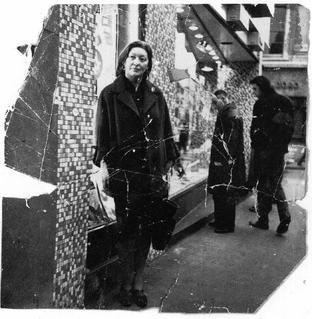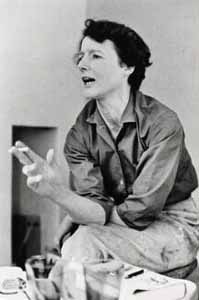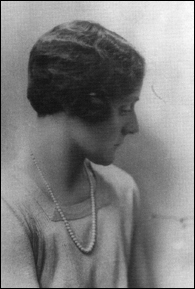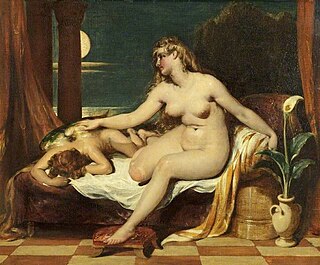Related Research Articles

Walter Richard Sickert was a German-born British painter and printmaker who was a member of the Camden Town Group of Post-Impressionist artists in early 20th-century London. He was an important influence on distinctively British styles of avant-garde art in the mid and late 20th century.

Bridget Louise Riley is an English painter known for her op art paintings. She lives and works in London, Cornwall and the Vaucluse in France.

Lucian Michael Freud was a British painter and draughtsman, specialising in figurative art, and is known as one of the foremost 20th-century English portraitists. He was born in Berlin, the son of Jewish architect Ernst L. Freud and the grandson of Sigmund Freud. Freud got his first name "Lucian" from his mother in memory of the ancient writer Lucian of Samosata. His family moved to England in 1933, when he was 10 years old, to escape the rise of Nazism. He became a British naturalized citizen in 1939. From 1942 to 1943 he attended Goldsmiths' College, London. He served at sea with the British Merchant Navy during the Second World War.

John Christopher "Kit" Wood was an English painter born in Knowsley, near Liverpool.

Jessica Stewart Dismorr was an English painter and illustrator. Dismorr participated in almost all of the avant-garde groups active in London between 1912 and 1937 and was one of the few English painters of the 1930s to work in a completely abstract manner. She was one of only two women members of the Vorticist movement and also exhibited with the Allied Artists Association, the Seven and Five Society and the London Group. She was the only female contributor to Group X and displayed abstract works at the 1937 Artists' International Association exhibition. Poems and illustrations by Dismorr appeared in several avant-garde publications including Blast, Rhythm and an edition of Axis.

Wilhelmina Barns-Graham CBE was one of the foremost British abstract artists, a member of the influential Penwith Society of Arts.

Isabel Rawsthorne, also known at various times as Isabel Delmer and Isabel Lambert, was a British painter, scenery and costume designer, and occasional artists' model. During the Second World War she worked in black propaganda. She was part of an artistic bohemian society that included Jacob Epstein, Alberto Giacometti and Francis Bacon.
Rita Donagh is a British artist, known for her realistic paintings and painstaking draughtsmanship.

Prunella Clough was a prominent British artist. She is known mostly for her paintings, though she also made prints and created assemblages of collected objects. She was awarded the Jerwood Prize for painting, and received a retrospective exhibition at Tate Britain.

Joan Kathleen Harding Eardley was a British artist noted for her portraiture of street children in Glasgow and for her landscapes of the fishing village of Catterline and surroundings on the North-East coast of Scotland. One of Scotland's most enduringly popular artists, her career was cut short by breast cancer. Her artistic career had three distinct phases. The first was from 1940 when she enrolled at the Glasgow School of Art through to 1949 when she had a successful exhibition of paintings created while travelling in Italy. From 1950 to 1957, Eardley's work focused on the city of Glasgow and in particular the slum area of Townhead. In the late 1950s, while still living in Glasgow, she spent much time in Catterline before moving there permanently in 1961. During the last years of her life, seascapes and landscapes painted in and around Catterline dominated her output.
Victor Arthur James Willing was a British painter, noted for his original nude studies. He was a friend and colleague of many notable artists, including Elisabeth Frink, Michael Andrews and Francis Bacon. He was married to Portuguese feminist artist Paula Rego.
Claude Maurice Rogers was a British painter of portraits and landscapes, an influential art teacher, a founding member of the Euston Road School and at one time the President of the London Group of British artists.

Mary Potter, OBE was an English painter whose best-known work uses a restrained palette of subtle colours.

Kathleen "Kay" Moir Morris was a Canadian painter and member of the Beaver Hall Group.

The Dawn of Love, also known as Venus Now Wakes, and Wakens Love, is an oil painting on canvas by English artist William Etty, first exhibited in 1828 and currently in the Russell-Cotes Art Gallery & Museum in Bournemouth. Loosely based on a passage from John Milton's 1634 masque Comus, it shows a nude Venus leaning across to wake the sleeping Love by stroking his wings. While Etty often included nude figures in his work, he rarely depicted physical intimacy, and owing to this, The Dawn of Love is one of his more unusual paintings. The open sensuality of the work was intended to present a challenge to the viewer mirroring the plot of Comus, in which the heroine is tempted by desire but remains rational and detached.
Millicent Margaret Fisher Prout was a British artist who helped improve perceptions of modern art in the UK.
Elsie Marian Henderson, later Baroness de Coudenhove, was a British painter and sculptor notable for her animal paintings.
Hilda May Gordon was a widely travelled British artist, known for her watercolour paintings of landscapes and figures.
Madge Oliver was a British artist who painted interiors and landscapes and lived and worked in France for many years.

Hilde Goldschmidt was a German expressionist painter and printmaker. Facing persecution under the Nazi regime, she sought refuge in Britain during the Second World War before establishing herself in Austria in the 1950s.
References
- 1 2 3 Frances Spalding (1990). 20th Century Painters and Sculptors. Antique Collectors' Club. ISBN 1-85149-106-6.
- 1 2 3 David Buckman (1989). Artists in Britain Since 1945. Art Dictionaries Ltd. ISBN 0953260909.
- 1 2 3 4 5 Alicia Foster (2004). Tate Women Artists. Tate Publishing. ISBN 1-85437-311-0.
- ↑ "Catalogue entry: The Expulsion". Tate. Retrieved 31 December 2017.
- 1 2 Benezit Dictionary of Artists Volume 2 Bedeschini-Bulow. Editions Grund, Paris. 2006. ISBN 2-7000-3072-9.